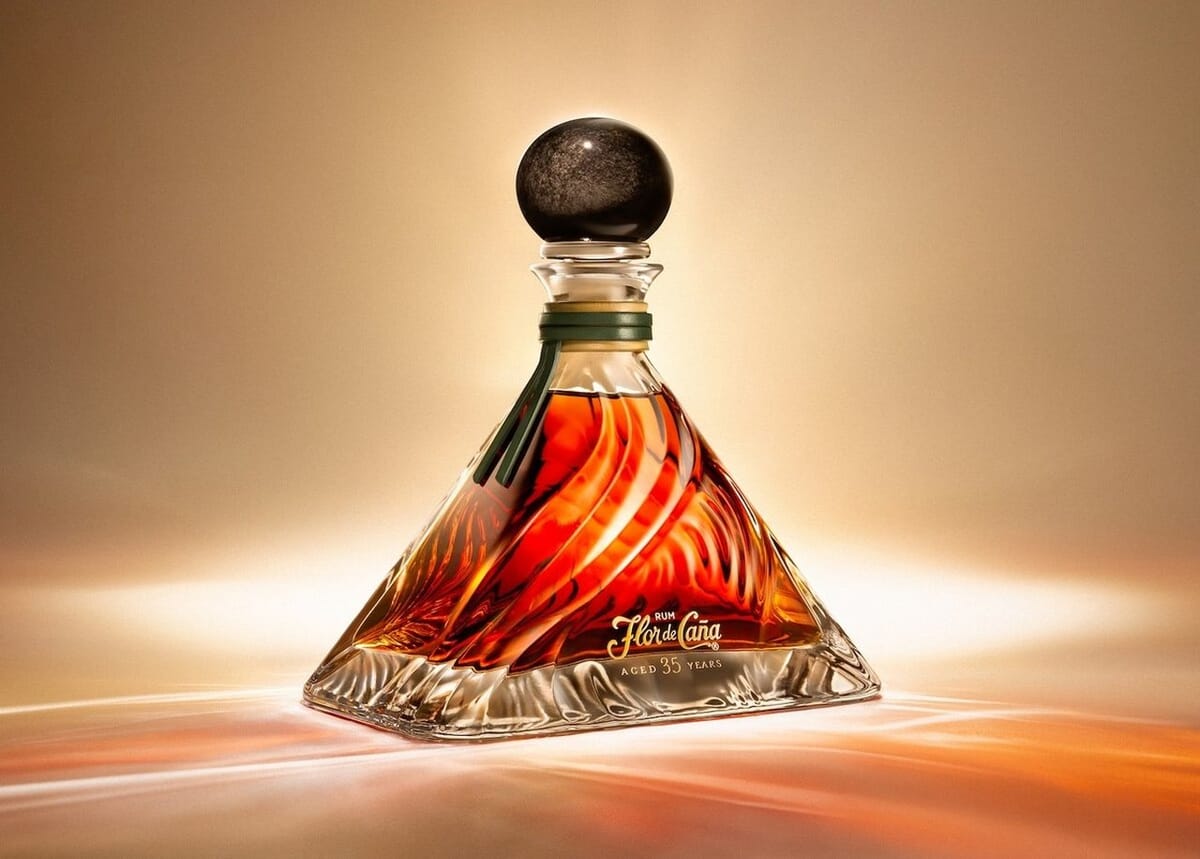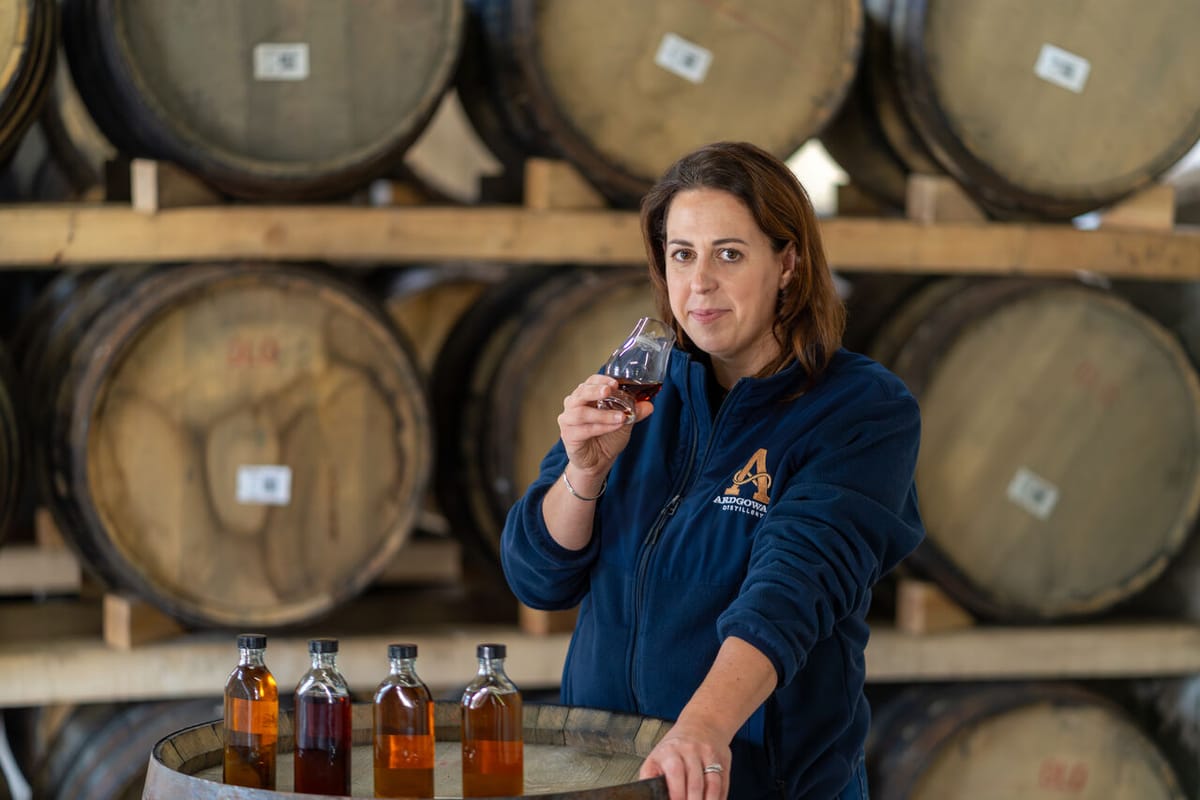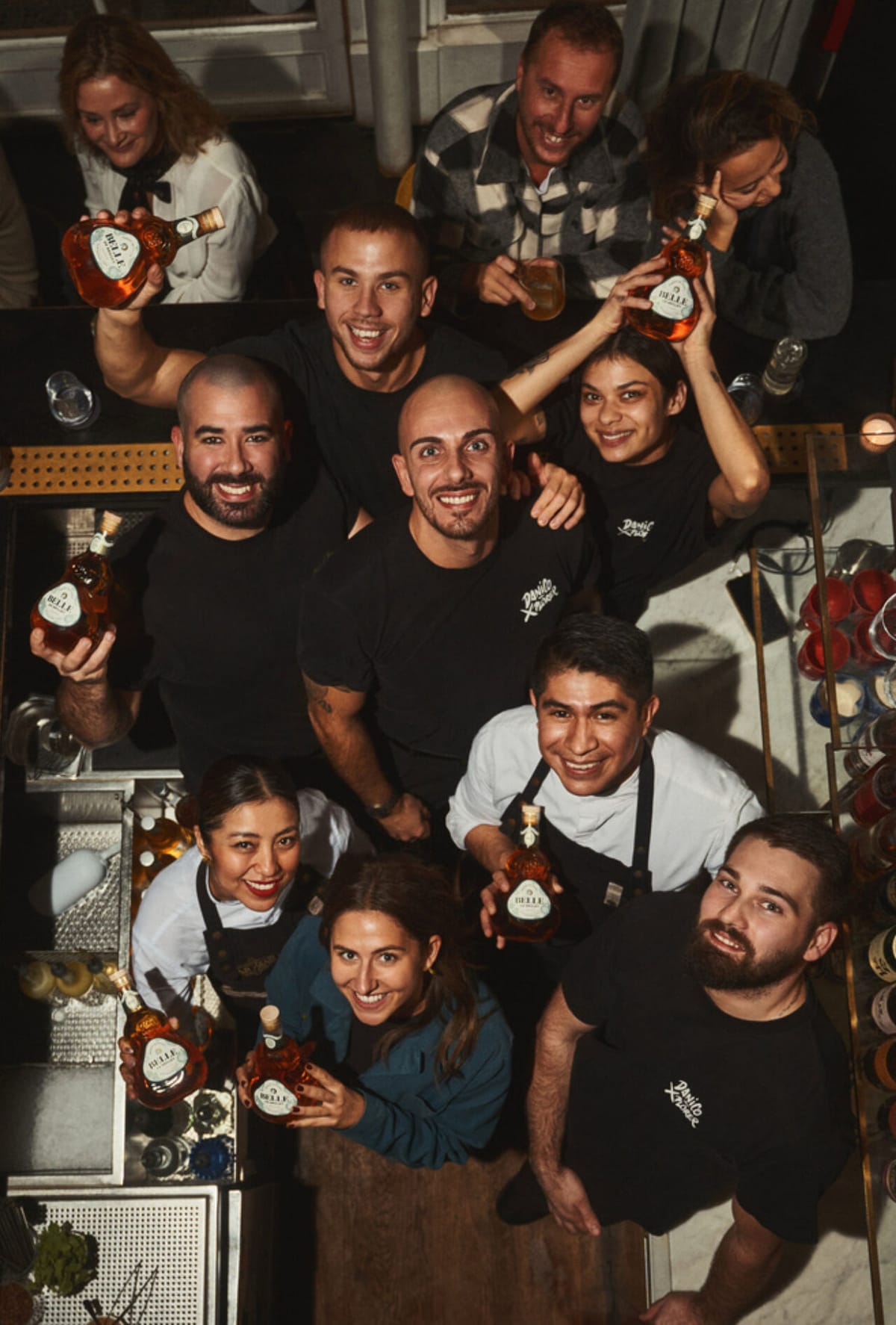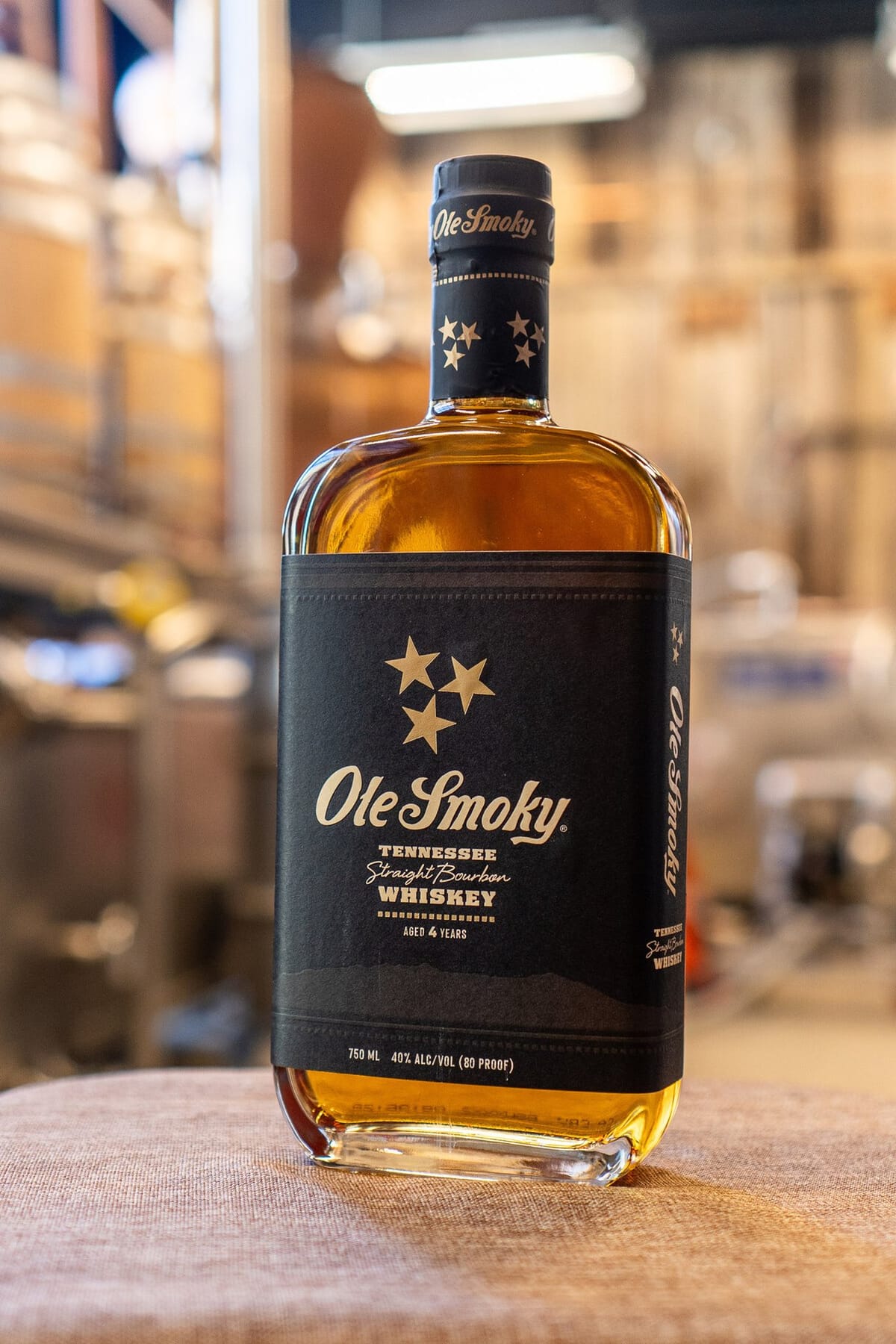Castor Club: The cocktail cabin in the Latin Quarter by Thomas Codsi
For 12 years, Castor Club has set the cocktail bar standard in the Latin Quarter. Founder Thomas Codsi looks back on its opening and concept in the context of the time, then shares his menu vision and approach to longevity.
The Castor Club experience: great cocktails in a warm atmosphere.
The Castor Club opened in January 2012.
I wouldn’t call it a Speakeasy; it’s more of a discreet bar with no sign out front. Indeed, that was a deliberate choice from the start, as the location was previously occupied by a bar whose clientele was used to mediocre drinks, like whiskey and cola. We realized that being discreet would attract people who understood what our establishment was about. We wanted guests to embrace something new, since it was a different era: people didn’t have the same cocktail culture they do now.
As for the wooden cabin style, it was chosen to create a warm atmosphere matching the bar’s name, itself inspired by the beaver as a totem animal. That’s why I never wanted to set up a terrace – even during the Covid period – because, in my view, the bar’s overall experience relies on all these elements: the drinks, the unique setting, and the music. The cocktail might taste just as good on a sidewalk with cars around, but the experience is diminished.
In short, the experience at the Castor Club isn't just about the drink alone; it encompasses the bar’s entire world—its atmosphere, music, and vibe.

We also stay open until 4 AM on weekends, and sometimes on Thursdays, although there may be fewer patrons than before.
The Castor Club is in an area with numerous restaurants, hotels, and bars, and after 2 AM, many customers work in the industry, such as teams from Cravan (Saint-Germain) or from the lineup of William Ledeuil’s restaurants. Not all necessarily come past 2 AM, but they do stop by after their shift for a drink or two. Often, couples who don’t work at the same spot meet here afterward to kick off the weekend.
A menu that’s half permanent
Everyone should be able to express themselves through their menu, and it matters that we don’t all offer the same thing, whether that’s a theme-based approach or one centered on seasonality.
At the Castor Club, among the 12 drinks on the menu, half remain year-round, and the other half changes based on the season. Plus, we also have a weekly cocktail.
Retaining a stable portion of the menu is an advantage, as returning customers like to find the cocktails they know and enjoy. These are like our house classics, such as the Chirac 95.


We’ve been open for over 10 years, and it can happen that customers come back seven years after their previous visit and are happy to find the cocktails they enjoyed before.
Of course, we might occasionally make small changes to match current tastes, for example by "reducing sweetness" in certain recipes. But those are minor tweaks.
How do we decide a cocktail is emblematic of a bar? By its sales, by whether it really made an impression on customers... A typical case is when a patron discovers a cocktail, then returns with friends, insisting they try that exact drink. Not to mention I can also be personally attached to it.
As for the rotating portion of the menu, out of our six cocktails, three change every two months, according to the season and what we wish to explore.
Nevertheless, we make sure to retain certain spirits on the menu. For instance, if we replace a tequila-based cocktail, we’ll feature another drink using that same spirit or a very similar one. However, we don’t truly follow a prearranged template. Naturally, we tend to serve more long drinks in summer, and in winter, we always have a hot cocktail.
The central idea is to offer variety on the menu.
Building some mystery to spark conversation with customers.
On our menu, you’ll see each cocktail’s name and its ingredients; there’s no mention of flavor profiles. That’s a conscious choice, motivated by the level of interaction I want to create with guests.
Indeed, the Castor Club has no dedicated servers: customers are seated at the bar, chatting with the bartenders. A menu that doesn’t list everything outright is meant to foster conversation and stir curiosity.
The same philosophy applies to our back bar, which only stocks brands that are essentially impossible to find in supermarkets. Customers no longer have their usual frame of reference, leading them to explore new flavors without resorting to the comforting familiarity of known products.
The same goes for alcohol-free cocktails: they’re not on the menu, but we make them upon request, guided by the customer’s preferences.


The weekly cocktail as a means of experimentation
The weekly cocktail format allows for a bit more experimentation: trying out innovative techniques, new products, and seeing how customers respond.
Of course, before any cocktail goes on the menu, the whole team tastes it. Then I often tweak it, which gives us opportunities to taste again and adjust as closely as possible, while observing reactions to see if people like it.
Sometimes, even frequent customers pitch in: early in the shift, if someone we know well is at the bar, we’ll have them try it for an opinion. That speeds up the adjustment phase.
This weekly cocktail concept works well: it sparks interest and keeps us continually searching for something new. It’s a collective outcome but can also showcase a bartender’s individual creation if he has really crafted it alone. Once it’s approved, he can present his personal recipe to customers for an entire week.
Various sources of inspiration
Inspiration comes from a wide range of places: a product found at a trade show that we’d like to feature, a technique we’d like to highlight, or occasionally from the name of a cocktail.
For example, the Banana Flip on our menu today was driven by that name itself. That name implies two ingredients: banana and an egg, but everything else was open-ended.
You start with an initial idea, then flesh it out according to the products and techniques you have. At times, you might simply want a drink suited to a particular mood.

Knowing how to evolve without losing your identity to last
I don’t believe we could open the same type of place today: a somewhat secretive cocktail bar, with no food, no beer, no wine, just spirits for tasting.
The Castor Club has seen very few changes in a decade—even the playlist has stuck around—to preserve its identity.
When you open a bar, you never really know how things will unfold, as you build it together with the patrons, particularly during the first year. You have to adapt, figure out what clicks, and how to make people engage with you, return, enjoy, and want to talk about you, so you build a reputation.
Once that’s established, it’s better not to change everything, as it’s precisely what got you there.
For instance, low-ABV cocktails are now in fashion, but we chose to keep making our drinks just as we have from the start—that is, somewhat stronger pours with a noticeable alcohol profile.
Likewise with the Rotavap: everyone’s using it these days. It’s fun, but I find it can homogenize the drinks a bit too much.
Two nights a week behind the bar
I usually work behind the bar on Tuesdays and Wednesdays. I enjoy it, plus it’s not too demanding a schedule. It gives me direct contact with patrons, but also lets me work with our bartenders: Louis Bonnevie and Krennen Martinez.
Spending an entire evening together allows us to talk and test future cocktail recipes; the dynamic is different from when I just drop by.
Additionally, it provides more comfortable work conditions (4 days a week) for the bartenders, balancing out the longer hours tied to closing late on weekends.

A Castor Club school?
Is there a Castor Club touch? I think you’d have to ask the people who have worked here (laughs).
I’m not certain. I sometimes spot little elements in the recipes of former staff, but since it was always a team effort, it’s not strictly mine.
When a bartender works here, I explain my ideas and ask them to follow those. So it must influence them in some way. It’s true that Guillaume Castaignet – cofounder of Mesures and Raphaël Blanc – head bartender for the Ducasse Paris group, alongside Margot Lecarpentier (editor’s note: also founder of the Combat bar) – started making cocktails with me.
I likely left some imprint, but they’re curious by nature and gained further professional experience later. Anyway, they were already making great cocktails at the Castor Club.
Cocktails as a personal mode of expression
I’d opened a very classic café-bar-restaurant in 2005 and wanted something a bit more personal, with more sophisticated products. Also, my grandmother always drank cocktails; she traveled a lot, and it was something we did at home. I knew how to make a Dry Martini at age 11 because she enjoyed one as an aperitif—same with an Old Fashioned—and she loved taking me to hotel bars. So it was a world I partly knew, and I sensed cocktails were on the rise in Paris.
The spot on Rue Hautefeuille suited my Castor Club idea. I learned mainly by reading—I have quite a large cocktail book collection—about spirits in general and their origins; and I also drank a lot of cocktails. I already knew how to run a bar, and cocktail creation happened pretty quickly. Over time, once the concept is strong, you can invent recipes without even picking up the bottles, sitting at your desk with a pencil.

A Lebanese bar scene influenced by the United States
I started drinking cocktails there 20 years ago and always saw well-stocked back bars. They didn’t necessarily have top-notch spirits—sometimes fifteen types of vodka—but displaying a lot of bottles was part of a bar’s décor.
From my perspective, it’s influenced by the US, where even a tiny dive bar might have 50 to 70 bottles behind the counter.
Surprisingly, despite everything that’s happening, restaurants and bars continue opening in Lebanon. Those spots are often frequented by diaspora visitors returning on vacation, looking for what they know from their home country.
As a result, you can find fairly specialized places—like Kissproof, whose Beirut locale expanded to Paris last year.
In general, bars typically include local elements in their recipes to some extent: orange blossom, gum arabic, za’atar, infusions with local herbs, or excellent local blackberry syrup. However, arak isn’t often used in cocktails, except in a few smaller venues.
It’s worth noting that going out—dining in restaurants, having drinks, going clubbing on weekends—has always been a major part of life in Lebanon.
Open Tuesday through Saturday.
Menu (March 2024)





